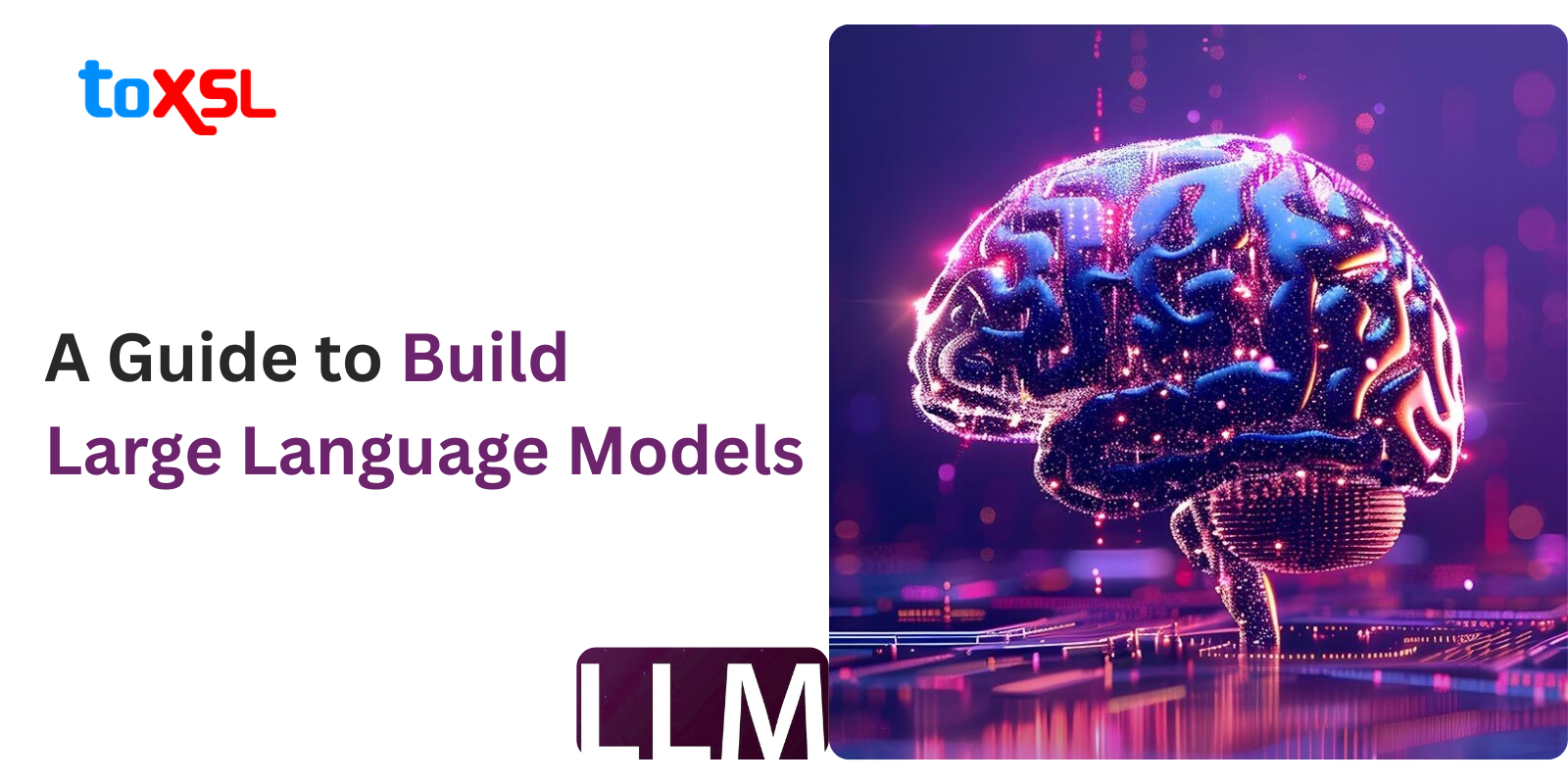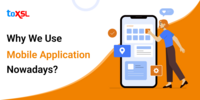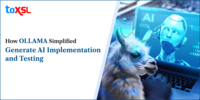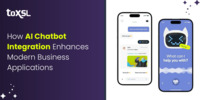- Sep 11, 2025
Share this post on:

The market research future reports that the Large Language Model (LLM) market is projected to grow to 30.0 billion by 2032, growing at a CAGR of 29.9%. Large Language Models (LLMs) have become a revolutionary advancement in artificial intelligence, transforming how businesses and individuals interact with technology. These models are capable of understanding and generating human-like language, enabling a wide array of applications—from chatbots to complex data analysis. This comprehensive guide explores what LLMs are, how to develop them, their benefits, use cases, challenges, and future prospects for enterprises.
Key Takeaways:
Large Language Models (LLMs) are AI models trained on huge datasets to understand and generate human language.
Developing an LLM involves data collection, model architecture design, training using vast computational resources, and fine-tuning.
LLMs provide benefits such as improved automation, enhanced customer experiences, and advanced analytics.
Use cases span across industries, including customer service, content creation, healthcare, legal, and more.
Challenges for enterprises include scalability, ethical considerations, data privacy, and high costs.
The future of LLMs in enterprises points toward greater integration, responsible AI, and more specialized applications.
What are Large Language Models (LLMs)?
Large Language Models are a class of deep learning models designed to process and generate natural language text by learning patterns from extensive amounts of textual data. They leverage architectures such as transformers, which enable the model to capture context and semantic relationships across words, sentences, and paragraphs.
Typically built using millions to billions of parameters, LLMs can interpret complex language nuances.
Examples include OpenAI’s GPT series, Google’s BERT, and Meta’s Llama.
These models rely on self-supervised learning, where they predict missing words in sentences to learn language structures without explicit labels.
How to Develop an LLM Model
To develop a Large Language Model (LLM), follow these key steps:
1. Define Clear Objectives: Start by specifying the purpose of the LLM—for instance, building a chatbot for customer service, generating code, or automating document summarization. Clearly defining the objectives helps determine the size, data needs, architecture, and evaluation metrics of the model.
2. Collect and Prepare Data: Gather a massive and diverse dataset relevant to your use cases. Sources can include books, websites, technical documents, social media texts, and code repositories. The quality and breadth of data directly impact the model's ability to generalize.
3. Choose the Model Architecture: Transformer architectures are the gold standard in LLMs due to their ability to process language context effectively through mechanisms like self-attention. Decide on the model size (number of layers, hidden units, attention heads) based on available compute resources and task complexity. Popular architectures include GPT (Generative Pre-trained Transformer), BERT, and their variants.
4. Training the Model: Training entails unsupervised learning where the model predicts the next token based on context. This step requires substantial computing power, often involving GPUs or TPUs, and can take days to weeks.
Use optimization techniques such as:
Advanced optimizers (Adam, AdamW)
Learning rate schedules (warm-up, cosine decay)
Regularization (dropout, weight decay)
Distributed training can accelerate the process by parallelizing computation across multiple nodes.
5. Fine-Tuning for Specific Tasks: Once pre-trained, fine-tune LLM model on labeled datasets tailored to specialized tasks like question answering, summarization, or sentiment analysis. This allows the LLM to better handle domain-specific nuances and improve accuracy.
Fine-tuning requires smaller datasets and less compute relative to pre-training and can often be done with fewer epochs.
6. Evaluation and Testing: Evaluate the LLM using benchmark datasets different from training data to check for generalization. Key metrics depend on the task and may include:
Perplexity (language modeling)
Accuracy (classification)
BLEU or ROUGE (text generation/translation)
7. Deployment and Monitoring: Deploy the LLM in production environments as APIs or web services. Continuous monitoring is essential to ensure stable performance, detect concept drift, bias, or ethical concerns, and gather feedback for iterative improvements.
Benefits of Large Language Models
Large Language Models (LLMs) have become foundational to advancements in artificial intelligence, transforming how machines understand and generate human language. These models, trained on enormous datasets with billions of parameters, offer a range of powerful benefits that span numerous industries and use cases.
1. Natural Language Understanding and Contextual Awareness: One of the most significant benefits of LLMs is their ability to deeply understand language context, nuance, and intent. Unlike traditional language processing tools that rely on keyword matching or rule-based systems, LLMs grasp idiomatic expressions, sentiment, and even unstated implications in text. This capability enables more intuitive and human-like interactions in chatbots, virtual assistants, and AI-powered search engines. LLMs synthesize information across diverse sources, providing relevant, comprehensive, and conversational responses that make information retrieval faster and more effective.
2. Versatile Multimodal Content Generation: LLMs excel in creating coherent and contextually appropriate outputs in many styles and formats. Whether writing poems, technical reports, emails, or generating spoken language transcripts, LLMs can adapt to various tones, languages, and complexity levels. Additionally, modern multimodal LLMs extend beyond text to handle images and speech, enabling integrated applications like automated captioning, voice-based assistants, and enhanced content creation workflows. This versatility saves time and resources by automating creative and technical writing tasks.
3. Code Generation: Beyond natural language, LLMs have a profound impact on coding and software development. They can generate code snippets, entire functions, or programs based on natural language descriptions. Developers benefit from AI-powered coding assistance that helps find bugs, optimize software, write test cases, and explain complex logic. This improves productivity by automating repetitive coding tasks and reducing human error, accelerating the software development lifecycle across many industries such as healthcare, finance, and marketing.
4. Task Flexibility: LLMs are capable of performing a broad array of tasks — from summarization and translation to question answering and sentiment analysis — often without the need for specific fine-tuning. Their massive pre-trained knowledge enables few-shot and zero-shot learning, meaning they can adapt to new tasks with minimal example prompts. This reduces the need for maintaining multiple specialized models, streamlining AI deployment and enabling fast iteration on solutions.
5. Scalability and Efficiency: LLMs leverage advanced hardware accelerations such as GPUs and TPUs to process and analyze large volumes of text efficiently. They can handle long documents, parallelize computations, and generate real-time responses at scale. This makes them ideal for enterprise applications dealing with extensive datasets, research articles, or customer interactions, enhancing productivity and decision-making with quick access to insights.
6. Multilingual Support: With training on multi-language corpora, LLMs support translations and localization with high accuracy, maintaining the style and intent of the original text. They facilitate real-time communication across language barriers, supporting dozens or even hundreds of languages. This capability is crucial for businesses operating globally, enabling culturally relevant and context-aware content adaptation in marketing, legal, and literary domains.
7. Continuous Learning: LLMs improve over time by incorporating new data, refining parameters, and benefiting from architectural advancements. Their ability to learn in context allows them to quickly adapt to evolving language trends, slang, and emerging topics without full retraining. This dynamic learning keeps the models relevant and increasingly effective across a wide range of applications.
8. Enhanced User Experience: By generating natural-sounding, coherent responses, LLMs improve human-computer interaction in chatbots, virtual assistants, and customer service. They can understand user intent, detect sentiment, and provide personalized, context-aware replies that feel more engaging and helpful, boosting user satisfaction and operational efficiency.
Read More: Combining Agentic AI and LLMs: The Next Frontier in Intelligent Automation
Use Cases of LLM Models
Large Language Models (LLMs) have a wide range of use cases across various industries, leveraging their advanced language understanding, generation capabilities, and adaptability. Here are some of the major use cases of LLMs:
1. Information Retrieval: LLMs improve search engines by enabling more conversational, context-aware, and accurate responses to user queries. Unlike traditional keyword-based search, LLMs understand intent and generate answers that feel natural and comprehensive, elevating the user experience in platforms like Google or Bing.
2. Conversational AI: LLMs power chatbots and virtual assistants that provide real-time, personalized, and contextually relevant responses to customer inquiries. This reduces wait times, improves customer experience, and scales support operations with less human intervention. They can also analyze sentiment and escalate complex issues appropriately.
3. Text Generation: LLMs generate coherent and contextually appropriate text for applications such as article writing, marketing copy, creative storytelling, social media posts, and product descriptions. Businesses use them to automate content workflows while maintaining high quality and engagement.
4. Code Generation: LLMs assist software developers by generating code snippets, debugging, writing test cases, and explaining programming concepts. They translate natural language descriptions into working code, accelerating software development and reducing errors.
5. Language Translation: LLMs provide accurate, context-aware translation and localization services across numerous languages. They preserve the tone, style, and cultural context of the original content, enabling businesses to communicate effectively with global audiences.
6. Sentiment Analysis: LLMs analyze customer feedback, social media content, reviews, and surveys to gauge public sentiment and preferences. This helps marketers understand audience needs, predict trends, and tailor campaigns. They also facilitate competitive analysis by mining vast datasets for insights.
7. Personalized Learning: LLMs offer tutoring, generate practice problems, and provide tailored explanations to students. They enable adaptive learning platforms that respond to individual needs and knowledge gaps, democratizing education.
8. Healthcare and Medical Applications: LLMs assist with patient intake, basic diagnostics, summarizing clinical notes, and analyzing biomedical literature. They support vaccine research, drug discovery, and personalized treatment plans, often under expert supervision.
9. Fraud Detection: In banking and finance, LLMs analyze transaction patterns and communications to detect fraudulent activity quickly. They assess risk levels, improving security and compliance processes.
10. Supply Chain: LLMs analyze market demand, supplier options, and inventory management data to optimize supply chains. They support product ideation, testing, and development through data analysis and automation
Challenges in Developing LLM Models for Enterprises
Large Language Models (LLMs) offer tremendous potential to transform enterprises, but their development and adoption come with significant challenges. At the same time, the future of LLMs in enterprises looks promising with continual advances and growing integration. Here is a detailed overview:
Data Privacy and Security: Enterprises handle sensitive data bound by strict regulations like GDPR and CCPA. LLMs require vast datasets, raising risks of data exposure or leakage. Using third-party LLMs can further complicate control over proprietary data. Ensuring compliance and safeguarding customer privacy is a major challenge.
Model Bias, Inaccuracies, and Hallucinations: LLMs may inherit biases from their training data, leading to unfair or unethical outputs. Models sometimes "hallucinate," generating plausible but false or misleading information, risking brand reputation and decision-making reliability.
Lack of Interpretability and Transparency: LLMs often function as black boxes, making it difficult for enterprises in regulated industries to explain AI decisions or debug errors. Transparent, auditable AI is crucial for gaining stakeholder trust and meeting compliance requirements.
Integration Complexity with Legacy Systems: Incorporating LLMs into existing enterprise infrastructure is technically challenging. Compatibility with legacy databases, APIs, and workflows requires careful planning and development resources to avoid operational disruptions.
The Future of LLMs in Enterprises
The future of Large Language Models (LLMs) in enterprises is poised for transformative growth, characterized by widespread adoption, enhanced efficiency, and deeper integration into business workflows. Enterprises are increasingly investing in domain-specific and fine-tuned LLMs that cater to industry-specific needs, improving accuracy and relevance.
With the rise of AI agents capable of autonomous action beyond simple content generation, LLMs will increasingly support complex decision-making and automation across enterprises. Despite challenges such as data scarcity and the need for rapid evolution, the outlook remains optimistic, with LLMs expected to enhance productivity, creativity, and innovation while fostering human-AI collaboration in the coming years.
Conclusion
Building large language models is a technically demanding and holds the power to unlock powerful AI-driven benefits for enterprises. By using LLM models, organizations can strategically leverage LLMs to drive innovation and remain competitive. As the field progresses, businesses that invest in responsible, scalable, and specialized LLM solutions will set the stage for a future where intelligent machines and humans collaborate.
So, if you are looking to integrate AI solutions into the business, you are at the right place. ToXSL Technologies is a top-rated ai development company that can help businesses enhance their revenue. Want to learn more? Contact us today.












